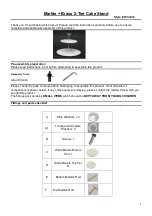
Sensors with cable connector / installed male device connector
•
Cable connectors / male device connector: protect against ingress of cleaning
agents using suitable sheathing
•
Screwed cable glands: protect against ingress of moisture
4.6.2
Electrostatic painting of the cylinder
The electrostatic painting process uses very high voltages (up to 100 kV) which can
damage the electronics of the sensor integrated into the cylinder. To avoid damage,
observe the following when painting the cylinder:
•
To avoid electrical isolation of the piston rod and the cylinder/sensor housing, do
not the suspend the cylinder by the piston rod
•
Clean off all lacquer and other residues from the hanging devices in the paint
shop, all connectors used to short-circuit the connecting wires, and all connec‐
tions to the paint shop earth
Painting of cylinders with an integrated sensor and M12 connector system or installed
male device connector
To protect the sensor electronics, use metal protective caps that meet the following
requirements:
•
The cap must not be made from aluminum
•
The cap must be made from a permanently electrically-conductive material
•
The cap must have an M12x1 thread
•
The cap must be screwed on until it contacts the flange plate on the connector
as desired
•
Always use a torque of
≥
5 Nm to tighten the cap
•
Make sure no paint particles get onto the thread or
pin contacts
Any paint particles on the outside of the cap will not impair the sensor.
A suitable cap can be purchased from the manufacturer as an accessory:
.
Painting of cylinders with an integrated sensor and cable connector or third-party con‐
nector
Cylinders with an integrated sensor and cable connector cannot be electrostatically
painted because the cable connector is not protected against over voltages. Reliable
electrostatic painting is only possible when using a combination of M12 connector sys‐
tem and protective cap.
4.6.3
Mounting the cylinder on mobile hydraulic machines
When mounting the cylinder on mobile hydraulic machines, ensure no male connectors,
cables or cable ends can be damaged in the process.
4.6.4
Electrical and electrostatic interference
Insulation tests
When performing insulation tests on mobile hydraulic machines, disconnect all sensor
connection cables to avoid damage from high voltages.
Welding
Welding currents may be produced when carrying out welding work on nearby compo‐
nents. Welding currents can damage the sensor pipe or the sensor electronics.
MOUNTING
4
8021473/2017-08-08 | SICK
T E C H N I C A L I N F O R M A T I O N | MAX48
19
Subject to change without notice
















































